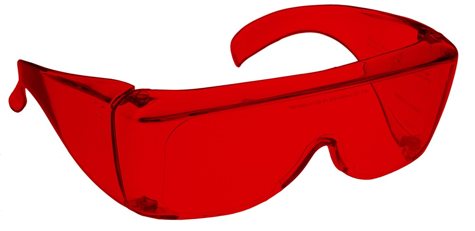NoIR laser goggles

Blocks certain wavelengths of light for better sleep
I have had insomnia issues for as long as I can remember. This year, I came across some research that seemed to indicate that blue light caused insomnia in some people. I started experimenting with all sorts of strategies of restricting blue light exposure, and now consider myself cured. The best way I found to block any light that would interfere with sleep was my NoIR laser goggles.
As a bit of scientific background, the pineal gland in the brain reacts to blue or green light received by the eyes, and stops generating melatonin when blue/green light is sensed. In our natural habitat, this would only happen during the day – in the unnatural world we live in, we are exposed to a lot of light with a blue/green component at night. This causes insomnia and poor sleep due to the lack of melatonin.
The frequency of light that affects the pineal gland is blue, green, and (partly) yellow. So, it’s not enough to just block the blue frequency – it’s important to block all light frequencies up to about 550 or so (red). Also, even a little blue/green light will still affect the pineal gland, so the optical density of the glasses has to be high (above 5) – they have to really block all light at those frequencies.
I wear my LaserShields for 2 hours before going to sleep. Because their optical density is so high, they really do not let any blue/green light through. I can use my laptop or my smartphone with no ill effects; I fall asleep immediately afterwards and sleep like a baby.
[Amazon sells laser protection goggles that are much cheaper. This model claims to filter light from 190nm to 540nm and costs $5. It might be worth trying these first. – Mark Frauenfelder]
10/12/15NoIR LaserShields $130






